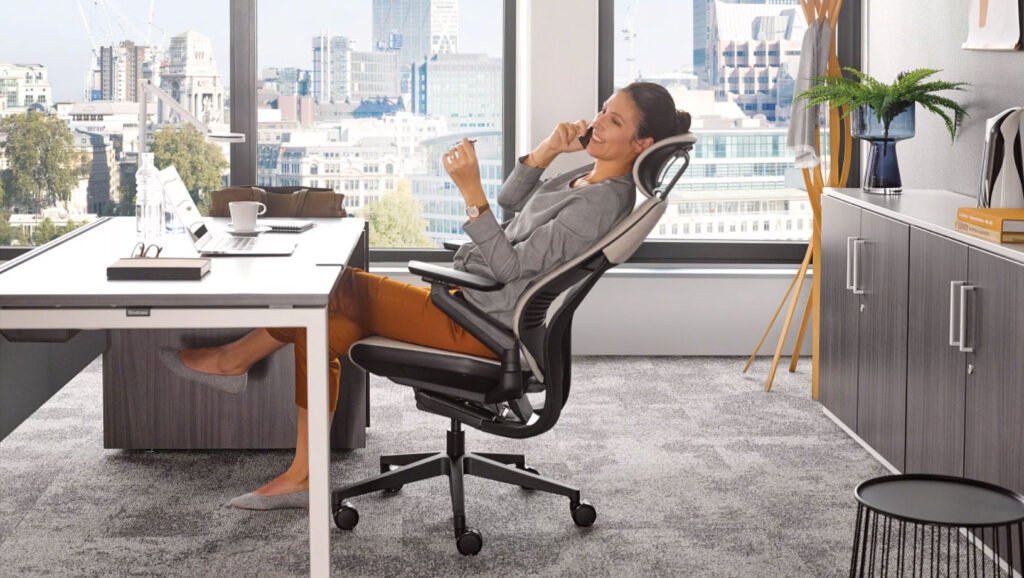Sitting at a desk for a long time does not mean you have to endure discomfort. By following the correct principles of office ergonomics, you can prevent some common health problems associated with prolonged sitting, such as neck and back pain, as well as discomfort in the wrists and shoulders. The key lies in adjusting the height of the chair, the distance between devices, and the correct posture of the table.

Professional chairs
Choose an ergonomic seat that can support the spine. The seat height should be adjustable to ensure that employees’ feet can be placed smoothly on the ground, or equipped with foot pedals to keep their thighs parallel to the ground. The armrest of the seat should be adjustable to support the natural placement of employees’ arms and reduce shoulder tension.
Desk
Ensure there is sufficient space under the desk for employees to move their legs and feet, and avoid stacking items under the desk. If necessary, adjust the height of the table by placing wooden boards or blocks under the table legs, or use adjustable height chairs and footrests to meet different work needs. Consider using edge pads or wrist pads to protect employees’ wrists and avoid discomfort caused by prolonged work.
Keyboard and Mouse
Place the keyboard in front of the employee to maintain a straight line between the wrist and forearm and reduce shoulder pressure. The mouse or other pointing device should be placed on the same horizontal plane as the keyboard and easily accessible. Ensure that employees keep their wrists straight, their upper arms close to their bodies, and their hands level or slightly lower than their elbows when using keyboards and mice.
Monitor
Place the computer monitor in front of the employee, closely behind the keyboard, at a distance of approximately one arm’s length from their face. The distance between the monitor and the face should be between 20 and 40 inches (approximately 50 to 100 centimeters), and the top of the screen should be at eye level or slightly lower. For employees wearing bifocal glasses, the height of the monitor can be appropriately lowered to obtain a better viewing angle.
Laptop
Laptops may cause discomfort to employees due to their lower screens, narrower keyboards, and touchpads. It is recommended to equip employees who use laptops with external keyboards and mice, as well as laptop stands, to simulate the comfortable settings of desktop computers and improve work efficiency.
By implementing these simple office ergonomics guidelines, work comfort and efficiency can be significantly improved, while reducing potential health issues that may arise from prolonged sitting work. Remember, ergonomics is not only about physical layout, but also includes regular activities and stretching to maintain the vitality and flexibility of the body.
